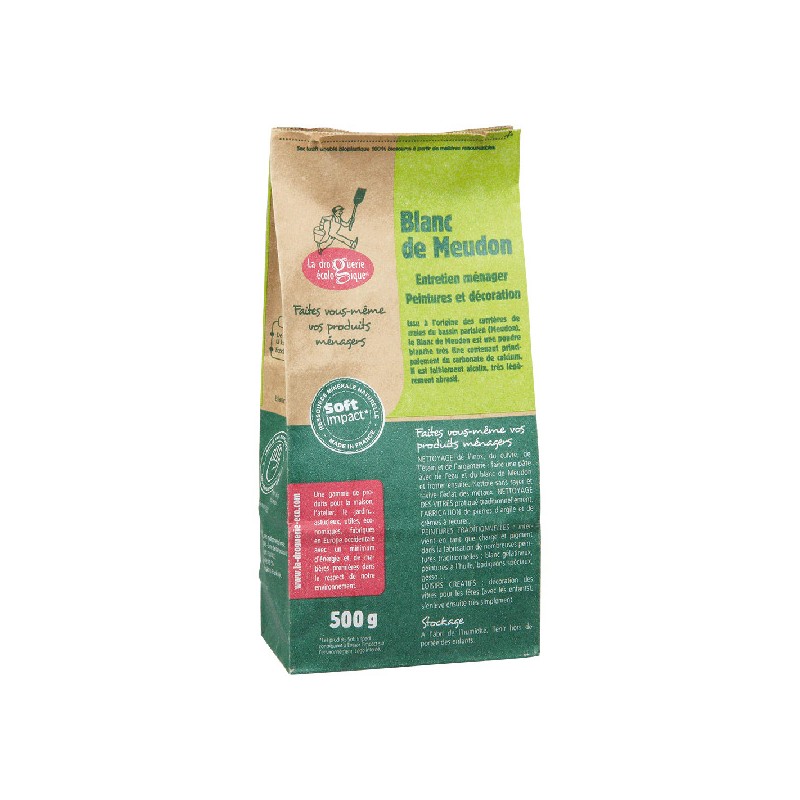




Blanc de Meudon has many names: Blanc d'Espagne, or sometimes Blanc de Champagne, de Troyes, de Toulouse, or more rarely "pierre blanche." It is made up of particles of calcium carbonate (CaCO3), which is the main component of limestone and chalk.
It is weakly alkaline, very slightly abrasive, and is traditionally used for paint manufacturing, household chores, and arts and crafts. It is also used for polishing silverware, earthenware, ceramic hobs, and plastics. It is suitable for gilding and polishing mirrors, as well as for bleaching shoe fabrics. Blanc de Meudon is used in the composition of mastic, certain sparkling waters, and as an incandescent powder for fireworks. It was once used for tanning hides, when this was still done by hand. In addition to its environmental benefits, Blanc de Meudon is safe to handle (unlike products from the petrochemical industry) and is inexpensive. Blanc de Meudon can be used pure, treated, and/or mixed with different materials. To make your own clay stone, mix 90g of Blanc de Meudon, 60mL of black soap, and 1 tsp of soda ash. Place in a jar and let it dry for 3 days in the sun or near a heat source until it becomes hard as a stone. Then use it to clean, scrub and make your surfaces shine.
You might also like
Your review appreciation cannot be sent
Report comment
Report sent
Your report cannot be sent
Write your review
Review sent
Your review cannot be sent

Blanc de Meudon has many names: Blanc d'Espagne, or sometimes Blanc de Champagne, de Troyes, de Toulouse, or more rarely "pierre blanche." It is made up of particles of calcium carbonate (CaCO3), which is the main component of limestone and chalk.





